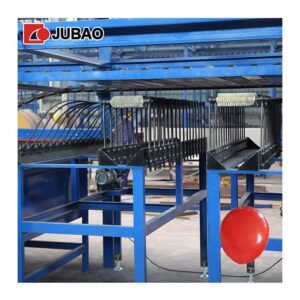Is it Worth Starting a Balloon Business? A Comprehensive Guide
Table of Contents
- Market Overview and Opportunities
- Initial Investment and Equipment Costs
- Understanding Balloon Manufacturing Machine Requirements
- Revenue Streams and Profit Potential
- Challenges and Risk Factors
- Marketing Strategies for Success
- Conclusion: Making the Final Decision
Market Overview and Opportunities
The balloon industry has experienced steady growth over the past decade, driven by increasing demand for party supplies, event decorations, and promotional materials. The global balloon market was valued at approximately $1.2 billion in 2023 and is projected to continue expanding at a compound annual growth rate (CAGR) of 4.5% through 2028.
Several factors contribute to this positive outlook. First, the events industry continues to flourish, with corporate events, weddings, birthday parties, and festivals requiring balloon decorations. Second, the rise of social media has increased demand for Instagram-worthy party setups, where balloons play a crucial decorative role. Third, businesses increasingly use custom-printed balloons for marketing and brand promotion.
Key Market Segments
The balloon business encompasses several lucrative segments:
Event Planning and Party Supplies: This represents the largest market segment, including birthday parties, weddings, corporate events, and seasonal celebrations. The demand remains consistent year-round with peak seasons during holidays and summer months.
Corporate and Promotional Use: Companies use branded balloons for trade shows, grand openings, and marketing campaigns. This B2B segment often provides higher profit margins and bulk orders.
Specialized Applications: Medical balloons, weather balloons, and scientific research applications represent niche but profitable markets with specific requirements and higher pricing.
Initial Investment and Equipment Costs
Starting a balloon business requires careful financial planning and understanding of various cost components. The initial investment can range from $10,000 for a small home-based operation to over $100,000 for a full-scale manufacturing facility.
Basic Equipment and Supplies
For a retail-focused balloon business, essential equipment includes helium tanks, balloon pumps, ribbons, weights, and storage facilities. A basic setup might cost between $5,000 and $15,000, depending on the scale and quality of equipment chosen.
Inventory costs represent another significant investment. A diverse selection of latex and foil balloons in various colors, sizes, and designs is essential for meeting customer demands. Initial inventory investment typically ranges from $3,000 to $10,000.
Facility and Location Considerations
Location plays a crucial role in balloon business success. Retail operations benefit from high-visibility storefronts in shopping centers or busy commercial areas, while wholesale operations can function effectively from industrial spaces with lower rent costs.
Monthly facility costs vary significantly by location but typically range from $1,500 to $5,000 for suitable commercial space. Factor in utilities, insurance, and basic renovations to create an attractive customer environment.
Understanding Balloon Manufacturing Machine Requirements
For entrepreneurs considering balloon production rather than just retail, investing in a balloon manufacturing machine becomes a critical decision. These specialized machines can transform your business from a simple retailer to a full-scale manufacturer, significantly impacting profit margins and market positioning.

Types of Manufacturing Equipment
Modern balloon manufacturing machines come in various configurations, from semi-automatic units suitable for small-scale production to fully automated systems capable of producing thousands of balloons daily. Entry-level equipment typically costs between $25,000 and $50,000, while industrial-grade systems can exceed $200,000.
The production process involves several stages: latex preparation, dipping, drying, and quality control. Each stage requires specific equipment and expertise. Semi-automatic machines require more manual intervention but offer lower initial investment and greater flexibility for small batches and custom orders.
Production Capacity and Economics
A basic balloon manufacturing machine can produce 1,000 to 3,000 balloons per day, depending on size and complexity. Higher-end equipment can achieve production rates of 10,000 or more balloons daily. The key to profitability lies in achieving economies of scale while maintaining quality standards.
Raw material costs for balloon production are relatively low, with latex being the primary expense. A single balloon’s material cost ranges from $0.02 to $0.08, while retail prices can range from $0.50 to $3.00 or more for specialty designs. This significant markup potential makes manufacturing attractive for businesses with sufficient volume.
Quality Control and Compliance
Manufacturing balloons requires adherence to safety standards and quality control measures. In the United States, balloons must meet CPSC (Consumer Product Safety Commission) requirements, particularly for children’s toys. Regular testing for strength, durability, and chemical safety is essential.
Establishing quality control procedures and maintaining consistent product standards builds customer trust and reduces liability risks. Investment in testing equipment and staff training should be factored into the overall manufacturing budget.
Revenue Streams and Profit Potential
A successful balloon business typically develops multiple revenue streams to maximize profitability and reduce dependence on seasonal fluctuations. Understanding these various income sources helps entrepreneurs build a more resilient business model.
Retail Sales and Party Supplies
Direct-to-consumer retail sales form the foundation of most balloon businesses. This includes individual balloon sales, balloon bouquets, party packages, and custom arrangements. Profit margins on retail sales typically range from 200% to 400%, making this a highly profitable segment when managed effectively.
Seasonal events like Valentine’s Day, graduation season, and Christmas can generate 40-60% of annual retail revenue in concentrated periods. Successful businesses prepare inventory and marketing campaigns well in advance of these peak periods.
Event Planning and Decoration Services
Offering balloon decoration services for events significantly increases revenue per customer while building long-term relationships. Services might include balloon arches, centerpieces, room decorations, and complete event theming.
Event services command premium pricing, with typical projects ranging from $200 for small birthday parties to $5,000 or more for large corporate events or weddings. The key to success in this segment is developing a portfolio of impressive designs and maintaining relationships with event planners and venues.
Wholesale and B2B Sales
Selling to other party supply stores, event planners, and retailers provides steady volume sales with lower per-unit profits but reduced marketing costs. Wholesale margins are typically 50-100% above cost, lower than retail but compensated by volume and reduced handling.
Corporate accounts represent particularly valuable opportunities, as businesses often place regular orders for promotional events, trade shows, and marketing campaigns. These accounts typically pay on established credit terms and provide predictable revenue.
Challenges and Risk Factors
Like any business venture, balloon businesses face specific challenges and risks that must be carefully considered and managed. Understanding these potential obstacles helps entrepreneurs prepare effective strategies and make informed decisions.
Seasonal Demand Fluctuations
The balloon business experiences significant seasonal variations, with peak demand during holidays, graduation season, and summer months. This cyclical nature requires careful cash flow management and inventory planning to survive slower periods while capitalizing on peak seasons.
Smart operators use slow periods for equipment maintenance, staff training, marketing campaign development, and exploring new revenue streams. Building relationships with schools, churches, and community organizations can help generate off-season business.
Competition and Market Saturation
The balloon industry includes competitors ranging from large party supply chains to small local operators. Each segment presents different competitive challenges. Large retailers compete on price and convenience, while local competitors may have established relationships and market knowledge.
Differentiation becomes crucial for long-term success. This might involve specializing in particular market segments, offering superior customer service, developing unique products, or providing comprehensive event services that competitors cannot match.
Supply Chain and Inventory Management
Balloon inventory management requires balancing variety, quantity, and shelf life considerations. Latex balloons can deteriorate over time, particularly when exposed to heat, light, or humidity. Foil balloons are more durable but require higher initial investment.
Establishing reliable supplier relationships ensures consistent product availability and competitive pricing. Many successful operators develop relationships with multiple suppliers to reduce dependence on any single source and improve negotiating power.
Marketing Strategies for Success
Effective marketing distinguishes successful balloon businesses from struggling competitors. The key lies in understanding customer needs, developing targeted messaging, and utilizing appropriate channels to reach potential customers efficiently.
Digital Marketing and Social Media
Social media platforms, particularly Instagram and Facebook, provide powerful tools for showcasing balloon creations and reaching potential customers. Visual content performs exceptionally well in the balloon industry, as customers want to see examples of decorations and arrangements.
Regular posting of high-quality photos and videos, customer testimonials, and behind-the-scenes content builds engagement and brand awareness. Paid social media advertising can effectively target local customers planning events or celebrations.
Local Partnerships and Networking
Building relationships with event planners, wedding venues, party rental companies, and photographers creates valuable referral opportunities. These professional partnerships often generate high-value customers and repeat business.
Participating in bridal shows, trade exhibitions, and community events provides direct access to potential customers while demonstrating expertise and building brand recognition in the local market.

Customer Retention Strategies
Developing a customer database and implementing retention strategies significantly improves profitability. Email marketing campaigns for holidays and special occasions, loyalty programs, and referral incentives encourage repeat business and word-of-mouth marketing.
Exceptional customer service creates memorable experiences that customers share with friends and family, generating valuable referrals and positive online reviews that attract new customers.
Conclusion: Making the Final Decision
Starting a balloon business can be worthwhile for entrepreneurs who carefully analyze market conditions, understand the investment requirements, and develop comprehensive business strategies. The industry offers multiple revenue streams, relatively high profit margins, and growing market demand driven by social media trends and continued celebration culture.
Success depends on several critical factors: choosing the right business model (retail, manufacturing, or service-focused), securing adequate initial capital, developing effective marketing strategies, and building strong customer relationships. The decision to invest in manufacturing equipment versus focusing on retail operations significantly impacts both initial investment and long-term profitability potential.
For many entrepreneurs, starting with a smaller retail operation and gradually expanding into manufacturing or specialized services provides a lower-risk path to building a sustainable balloon business. This approach allows for market testing, relationship building, and cash flow development before making larger capital investments.
The balloon business offers genuine opportunities for success, but requires the same careful planning, market analysis, and execution excellence as any other retail or manufacturing venture. Entrepreneurs who approach this opportunity with realistic expectations, adequate preparation, and commitment to customer service can build profitable and sustainable businesses in this growing industry.
